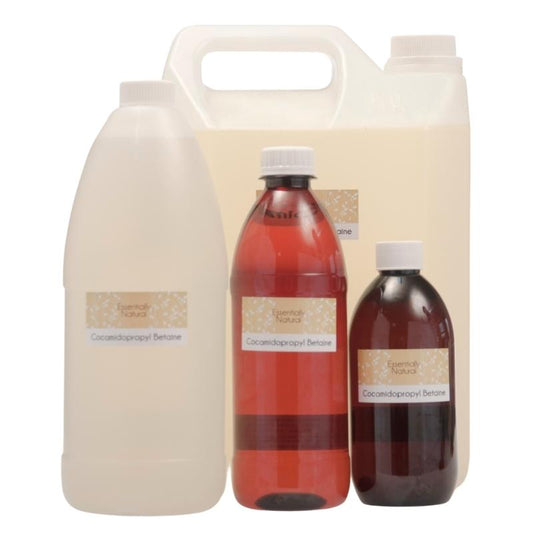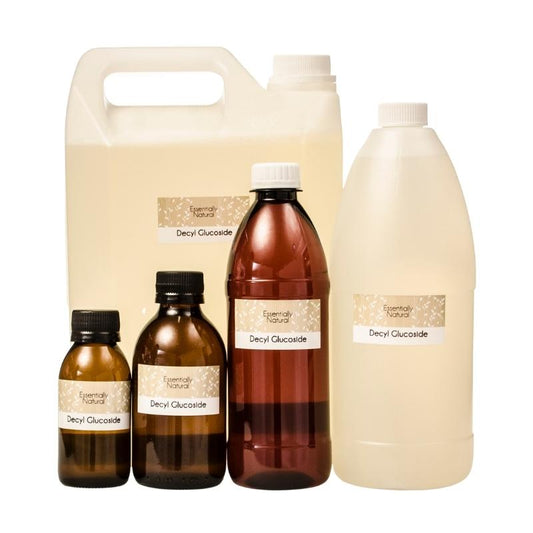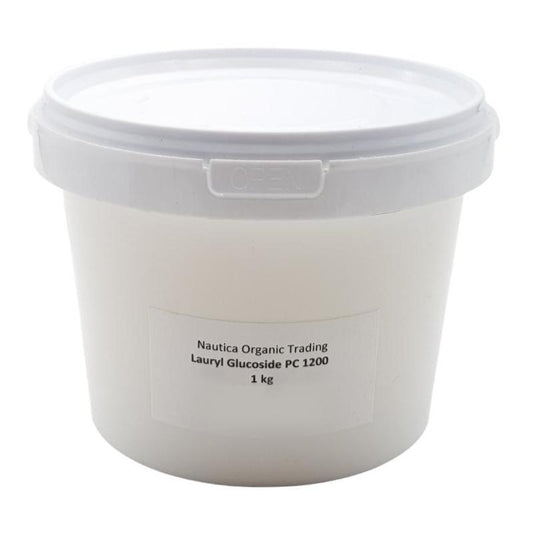
DIY Shampoo Recipes
Juliette van der MeerAs promised, this second installment of DIY Shampoos is all about recipes. If you’ve read Surfactants P5.1 where we shared our favourite natural shampoo ingredients (but by no means the full list), you will know more or less what goes into a good shampoo. Now it's time to formulate!
The beauty about making your own surfactant based shampoos is that you control what you put on your hair and scalp, but can still get ‘professional’ results, hair that is beautifully clean and shiny, as well as help save the environment from nasty chemicals as all our surfactants are fully biodegradable. You can also customise your shampoo to suit your unique hair needs.
So let's begin to formulate.
Make Your Infusions
I love herbal infusions! While you can easily make your shampoo without them (just use water instead), I find they greatly benefit your hair and scalp and so they come highly recommended.
To make, boil about 1 cup of distilled water and pour it over 2-3 teaspoons of your chosen herb(s). If your herb is powdered you will only need about 1.5-2 teaspoons. Leave to infuse overnight, then strain and your infusion will be ready for use.
- Peppermint leaf infusion leaves scalp feeling clean and fresh, and also stimulates hair follicles.
- Nettle is great for hair loss, helping along new hair growth and clearing up oily and dandruff prone hair. Nettle is also rich in vitamins A and C, iron and trace minerals as well as chlorophyll. Keep in mind that nettle can be irritating to some if used undiluted, so although it will be diluted in your shampoo formula, it would be best to do a patch test first.
- Marshmallow root contains a substance called mucilage, which binds to hair strands and therefore has a volumising effect. It is also slightly slippery, making it a good detangler and conditioner. Marshmallow is also a moisturiser and is perfect for those with dry or brittle hair.
- Horsetail root is a somewhat smelly herb but it's worth it. Horsetail is rich in the minerals selenium and silica. Selenium assists the body in processing iodine, which regulates hair growth. A deficiency in iodine can limit and even stop hair growth altogether. Silica promotes the structural integrity of hair strands, strengthening them, increasing shine and improving texture. To use, get the powdered herb and soak in freshly boiled distilled water overnight, then strain. The smell will dissipate as soon as you add the solution to your shampoo formula.
- Dried hibiscus is the gorgeous flower of the hibiscus tree, and has a deep pink red hue. It can be used as a colourant and is handy as a hair conditioner and volumiser and also increases shine. It can be made into a solution when soaked in water or hydrosol and turns bright pink, can be infused into oils (turns a deeper red colour), or the ground powder can be used as a gentle exfoliating scrub. Hibiscus tea can help to lower hypertension, blood pressure and blood sugar levels. It can also help with cramps and aid digestion. What a wonderfully useful flower!
Some other nice herbal infusions might be: lavender, rosemary, aloe vera, green tea, ginseng (for hair growth and to treat baldness) and moringa (a natural conditioner).
ASM for Shampoos
If you are wanting to formulate your own shampoo recipe, you will be watching out for how much of each surfactant to use. You will be using a primary surfactant followed by the secondary surfactant. Use cocamidopropyl betaine as an additional surfactant to make your surfactant blend more mild and balanced. For a shampoo, you will be looking for a total Active Surfactant Matter of 10-15% depending on how oily your hair is (use the higher figure for a more clarifying shampoo).
To calculate surfactant amounts for a shampoo with an ASM of let’s say, 13%, first assign values to your chosen surfactants:
As an example: Lauryl glucoside 5; coco glucoside 4; cocamidopropyl betaine 4. You can assign any value to your surfactants, adding to 13, but I quite like these proportions as I find it makes a nice mild shampoo.
Now we calculate:
Lauryl glucoside (with own ASM of 50%): 5/0.5 = 10
Coco glucoside (with own ASM of 55%): 4/0.55 = 7.3
Coco betaine (with own ASM of 30%): 4/0.3 = 13.3
All other ingredients to 100 (*I often include way more than this, but I like a mild shampoo. This is the technically correct amount, and I suggest you start with this and then experiment from there if you like).
And there we have our surfactant blend! The values can be in mils (recipe will then be for 100ml, otherwise multiple accordingly for a larger amount), grams (recipe will then be for 100g, otherwise multiple accordingly for a larger amount and make sure all other measurements are also in grams), or percentages.
Please refer to A Beginner’s Guide to Surfactants for a more detailed explanation of ASMs.
pH
With hair care, we are looking for a pH of between 4.5 to 5.5. So make sure you have pH test strips handy, as well as some citric acid solution. Make up a solution with ¼ teaspoon citric acid in ⅕ c distilled water. Stir it until fully dissolved and then use as necessary.
Recipes
Now that we know what's what, let's get down to some recipes.
Basic Clarifying Shampoo Recipe
Below is your basic clarifying shampoo recipe, with no bells or whistles. It is effective and easy to make. Once you’ve practiced, feel free to start experimenting by adding in extra ingredients.
Ingredients:
Phase A
- 140ml distilled water, hydrosol or infusion (or a combination) + extra if necessary
- 4ml xanthan gum
- 10ml vegetable glycerine
- 4 ml D-panthenol (optional but recommended)
- 2ml preservative such as Geogard 221
Phase B
- 15ml lauryl glucoside
- 10ml coco glucoside
Phase C
- 15ml cocamidopropyl betaine
- 2ml essential oils of choice
- citric acid solution
- pH test strips
Method:
- Hydrate the xanthan gum by blending it with the glycerine.
- Add the panthenol if using and add the preservative to the water then trickle in and blend to a smooth gel consistency.
- In a separate beaker, blend the lauryl and coco glucoside together to a paste.
- Add the aqueous solution to the surfactants and blend. You might find you want to add in some additional liquid depending on the consistency.
- Blend in the coco betaine and essential oils. Test the pH and adjust to around 5 with the citric acid solution.































10 comments
Hi Juliette.
I love this website, your values and the ingredients you sell! Can I ask why you do not use a sulfate-free anionic surfactant like sodium lauryl sarcosinate as the primary surfactant in your shampoo recipes? My understanding is that anionic surfactants have better cleaning ability and foaming properties than nonionic surfactants. Sulfate-free anionic surfactants are supposedly milder than SLS, ALS and SLES.
Regards
Nicole
Hello,
Would I be able to use the base items purchased from Essentially Natural and then simply add the other ingredients to get the specific recipe/purpose?
Hi Raksha, so glad you like our site! :)
Shelf life depends on many factors. Some factors are: how clean your utensils were when you made the product; how clean your storage containers are; conditions of storage; and of course your ingredients. Without actually having your product tested in a lab you won’t know an exact expiry date, but we do always add a preservative which provides decent protection against microbial growth. If you are marketing your products for sale and need an expiry date you will need to have your product tested.
With any product there is a possibility of the body not reacting well. It’s best to check if the user has any allergens and then avoid whatever needs to be avoided. I have never experienced any bad reactions and I have been making and using my shampoos for 3.5 years.
For mil to gram conversions, it is actually best to convert the recipe into %. You can then use the % amounts to convert into grams. All our latest recipes are in % so the user can convert easily; unfortunately this blog is a few years old so we were still using mils at the time. We learn as we go!
I mentioned 100ml in the previous paragraph where we were calculating ASMs and if you did a 1 for 1 conversion it would add to 100ml. The recipes don’t always follow a 1 for 1 conversion because 100ml of shampoo is not that much, so I usually make much more.
Hope all this helps!
Firstly, You have a wonderful website and im in love with the content and products you have onboards. Im so excited to discover this page and be able to make my own shampoos. I had a small question, would be really grateful if you could give some leads.
1. How do i know when my Final product will expire? how much is the shelf life once made? does it depend upon the shelf life of the raw materials and do i check which raw material has the earliest expiry and label my product’s expiry date accordingly?
2. How safe are these for use? is there a possibility of it going extremely wrong? might lead to excessing hair fall or allergies?
3. Your recipie mentions ML for each raw material. what about things like Xanthan gum, D-panthenol, Lauryl glucoside and Coco glucoside etc, which are sold in grams/ Kgs. how do i measure them in ml while using proportion ? how will i know ml to g conversion for these?
4. In your first recipe, we have taken 140ml of distilled water, but u mention that the quantity of the recipe is just 100ml. Does the quantity reduce as we add other ingredients?
Thank you in advance !
Lots of love <3
Hi. Can you help me with making commercial shampoo, conditioner.
Thank you